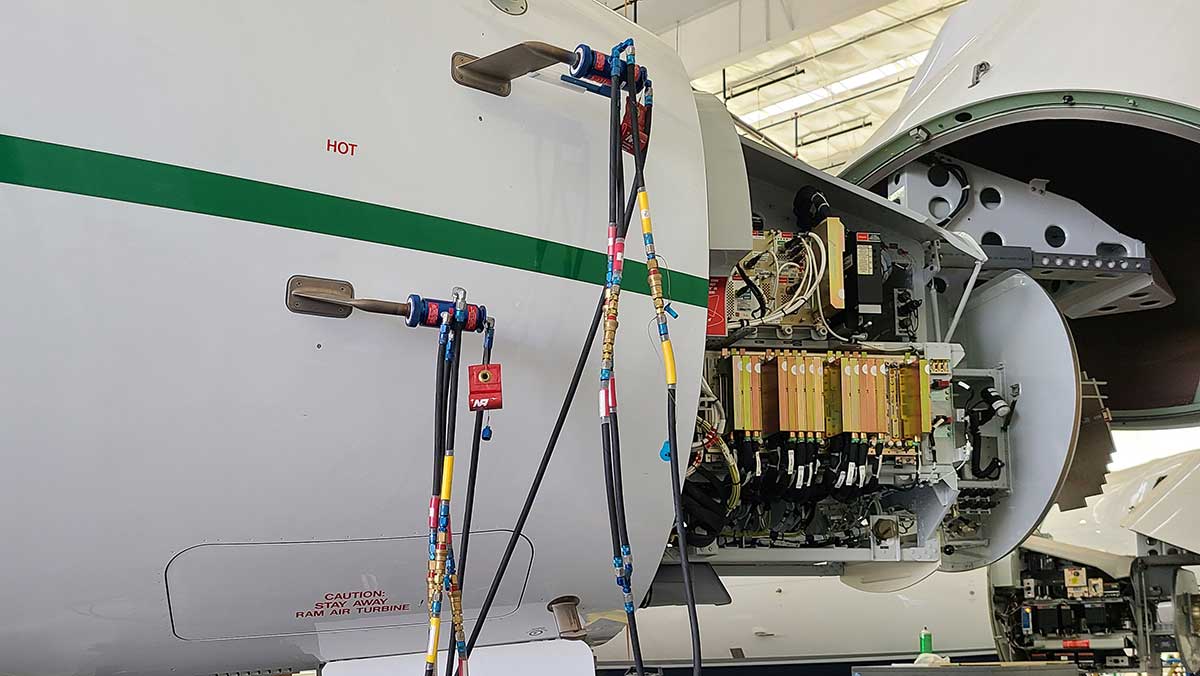 The pitot static system has required testing every two years. Aircraft operators can successfully perform these tests on the ramp using the correct equipment and following proper procedures. The system can also be pulled and sent to an authorized repair station, like Duncan Aviation.
The pitot static system has required testing every two years. Aircraft operators can successfully perform these tests on the ramp using the correct equipment and following proper procedures. The system can also be pulled and sent to an authorized repair station, like Duncan Aviation.
Many pitot static units sent to us arrive damaged, most often due to improper procedures performed on the ramp.
Here are the four most common mistakes that lead to a damaged altimeter or airspeed indicator during a ramp test.
Test Equipment Is Not Hooked Correctly
Pay close attention that the hoses get connected to the correct port. They are not interchangeable. A static port tube connected to the pitot port could damage the capsule, the heart of an altimeter, and airspeed indicator. The capsule expands and contracts in reaction to the air pressure change around it. If too much or incorrect pressure is applied, that can damage the capsule and make the unit inaccurate.
No Airspeed Pressure Applied
Airspeed pressure is applied after the test equipment is connected and before the altitude run-up begins. We suggest having at least 100 nm. If there is no airspeed pressure, damage to the pitot capsule could occur.
Too Much Airspeed Pressure Is Applied Too Quickly
If using a manual pitot/static tester, do not immediately open the valve wide open when beginning the ramp test. Allow the pressure to build gradually. If a blast of air is applied too quickly, the shock on the capsules can crush, crinkle, or destroy them, requiring the unit to be removed and sent for repair.
If using a digital pitot/ static tester to preset the altitude rate of climb, do not exceed the aircraft's VSI (vertical speed indicator). Most aircraft will have 6,000 FPM (feet per minute) VSI installed. I recommend setting the altitude rate on the test set to 4,000 FPM and the test set airspeed not to exceed 500 KTS/min rate of change. This will ensure gradual pressure changes and not damage the instruments.
Airspeed Pressure Is Released Too Quickly
Don't immediately unhook the equipment after completing the test and with the air pressure brought up to altitude. The sudden removal of air pressure from the ports could cause the same damage as providing too much pressure too quickly, just in reverse. It may also cause damage to other moving parts simultaneously, such as the pivots, jewels, or gears on the gear shafts inside the units.
January 2026
January 2026
January 2026
January 2026
December 2025